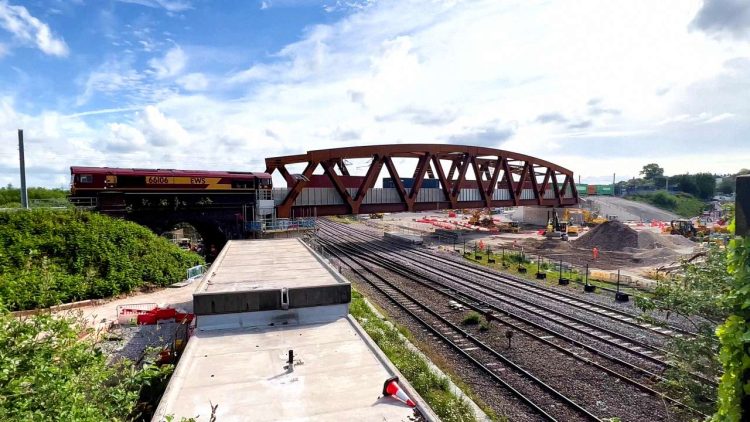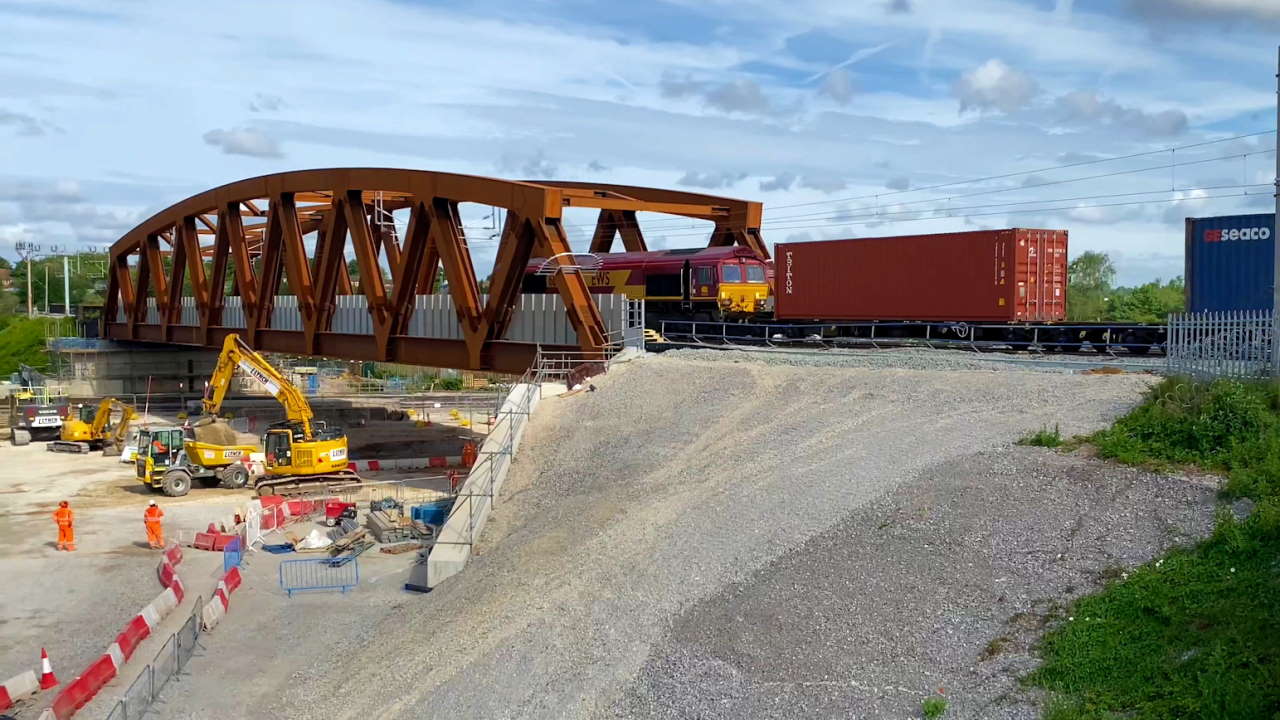On Monday, 23rd May, the Midlands’ newest and longest railway bridge became fully functional after carrying its first freight train.
The bridge weighs 2,600 tonnes and at 92 metres long, the steel and concrete structure is the longest single-span railway bridge in the Midlands.
It is on the freight line between Stechford and Aston in Birmingham and built by Network Rail in partnership with HS2 so that trains can access HS2’s depot at Washwood Heath.

Demolition of the old railway viaduct and installation of the new bridge closed the line to the Birmingham rail freight terminal for 23 days. Building and installing the bridge involved precision planning and engineering and the use of some heavy-duty equipment.
In a civil engineering project that has taken over two years, the structure was pre-assembled on-site, then driven into place by remote-controlled vehicles earlier this month. Building it on-site reduced carbon emissions and cut the number of lorry movements on local roads, minimising the impact on the local community.
Later this summer, further work in the area to prepare the railway for HS2 will take place over four consecutive weekends from 13th August to 4th September. That will affect CrossCountry passengers on the Birmingham New Street to Coleshill Parkway route, with trains being replaced by replaced by rail-replacement buses. Some long-distance services will also be diverted, resulting in longer journey times.The summer work will include:
- upgrading signals at Washwood Heath;
- installing piles at Duddeston in preparation for a new underbridge;
- engineering work on a bridge at Heartlands Park;
- maintenance activity on this section of the railway to make it more reliable.
Passengers should plan their journeys in advance at www.nationalrail.co.uk
Patrick Cawley, director for ‘On Network Works’ for Network Rail and HS2, said: “Seeing the first train pass over this iconic structure is a proud moment for the hundreds of people who’ve worked throughout the pandemic to make this new bridge a reality.
“It’s also a key part of the jigsaw to ensure the existing railway network works in harmony with HS2. I’m conscious this work has disrupted some passenger journeys over recent weeks and I’d like to thank CrossCountry customers for their patience while we carried out this major project.”
Rosario Barcena, Skanska Rail programme director, said: “Installing a railway bridge over an existing railway line is a complex engineering project that requires a huge amount of skill and dedication from all those involved. To have delivered this on time and despite of Covid-19 restrictions is a fantastic achievement and testament to the team involved.”





Responses
Impressive engineering achievement.
The new bridge appears to be well-rusted plain steel and, unlike new steel structures previously used in the UK, appears to be neither painted nor galvanized. Can anyone comment whether this is a new Network Rail policy who now will just accept that rust will continue until the bridge is replaced rather than repainted?
I ask because, having travelled a bit in the US, this appears to be their policy for railroad bridges. All are very rusty and leave large unsightly trails of rusty water all over their masonary or concrete supports.
The bridge is constructed using Corten a `weathering steel’ alloy which forms a tight rusted coating which seals off further corrosion so there is no further deterioration. It is however necessary to carefully detail contacts with concrete etc to avoid staining from rainwater run off.